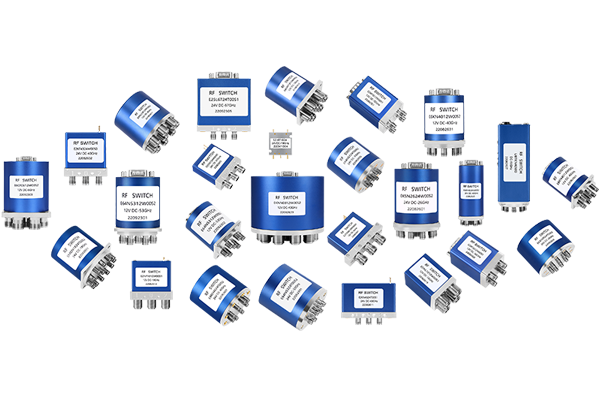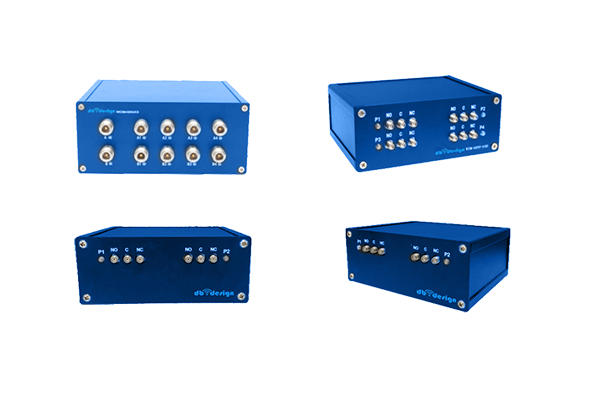
Pin diodes have become a crucial element in high-frequency systems because of their innate electrical traits Their prompt switching characteristics combined with low capacitance and small insertion loss enable efficient use in switching modulation and attenuation scenarios. The operative principle for PIN diode switching centers on bias-controlled current modulation. A change in bias voltage transforms the depletion-region width of the p–n junction, affecting conductance. Adjusting the bias enables PIN diodes to be switched for high-frequency operation while minimizing distortion
PIN diodes find placement inside complex circuit frameworks when precise timing and control is required They can function inside RF filters to permit or attenuate targeted frequency bands. Moreover their high-power handling capability renders them suitable for use in amplification division and signal generation stages. Miniaturization and improved efficiency of PIN diodes have extended their usefulness across wireless systems and radar platforms
Performance Considerations for Coaxial Switch Engineering
The design of coaxial switches is intricate and needs detailed assessment of numerous variables Switch performance is influenced by factors like the switch type operating frequency and insertion loss characteristics. Superior coaxial switch design seeks minimal insertion loss alongside strong isolation between ports
Performance assessment centers on return loss insertion loss and port isolation metrics. Metrics are assessed using simulation tools theoretical modeling and laboratory measurements. Rigorous performance analysis is necessary to secure dependable coaxial switch operation
- Analytical methods simulation packages and experimental testing are standard approaches to coaxial switch analysis
- Environmental temperature impedance mismatches and production tolerances can significantly influence switch characteristics
- Emerging developments and novel techniques in switch design concentrate on boosting performance while minimizing footprint and energy use
LNA Performance Enhancement Techniques
Tuning LNA gain efficiency and performance parameters is essential for outstanding signal fidelity in diverse systems It necessitates thoughtful transistor selection bias configuration and circuit topology planning. A strong LNA design reduces noise contribution and boosts signal amplification with minimal distortion. Simulation based analysis is critical to understand design impacts on LNA noise performance. Striving for a minimal Noise Figure assesses success in retaining signal power while limiting noise contribution
- Selecting devices that exhibit low intrinsic noise is a primary consideration
- Using appropriate optimal bias schemes is important to control transistor noise
- Circuit topology significantly influences overall noise performance
Implementing matching networks noise reduction strategies and feedback control enhances LNA outcomes
Signal Path Control Using Pin Diodes

Pin diode switch implementations yield flexible efficient routing of RF signals in diverse applications They can be switched very fast to allow flexible dynamic routing of RF signals. PIN diodes’ low insertion loss and good isolation preserve signal quality through switching events. They are applied in antenna selection circuits duplexers and phased array antenna systems
Switching depends on bias-induced resistance changes within the diode to route signals. In its open state the diode’s resistance is high enough to stop signal flow. Forward biasing the diode drops its resistance allowing the RF signal to be conducted
- Further advantages include fast switching low power requirements and compact design of PIN diode switches
Different design configurations and network architectures of PIN diode switches provide flexible routing functions. By networking multiple switches designers can implement dynamic matrices that permit flexible path selections
Performance Efficacy Assessment of Coaxial Microwave Switches

Evaluation and testing of coaxial microwave switches is vital for verifying correct operation in electronic networks. Many factors such as insertion reflection transmission loss isolation switching speed and spectrum range govern switch performance. Thorough evaluation entails measurement of these parameters under diverse operational environmental and testing circumstances
- Moreover the evaluation must factor in reliability robustness durability and environmental stress tolerance
- In the end the outcome of rigorous evaluation supplies essential valuable and critical information for switch selection design and optimization
Comprehensive Review on Reducing Noise in LNA Circuits
Low noise amplifiers are fundamental in wireless RF systems as they amplify weak signals and reduce noise contributions. This survey offers an extensive examination analysis and overview of approaches to minimize LNA noise. We examine investigate and discuss the fundamental noise sources including thermal shot and flicker noise. We further consider noise matching feedback solutions and biasing best practices to lessen noise. It presents recent developments like new semiconductor materials and fresh circuit architectures that lower noise figure. By elucidating noise reduction principles and applied practices the article aims to be a valuable resource for engineers and researchers building high performance RF systems
PIN Diode Uses in Rapid Switching Systems

They exhibit unique remarkable and exceptional features that render them ideal for high speed switching Low parasitic capacitance and small resistance enable quick switching to handle precise timing requirements. Additionally PIN diodes show a linear adaptive response to voltage facilitating accurate amplitude modulation and switching behavior. This flexible adaptable versatile behavior makes PIN diodes suitable applicable and appropriate for varied high speed roles They find use in optical communications microwave circuitries and signal processing devices and equipment
Integrated Circuit Solutions for Coaxial Switching
Coaxial switch IC integration provides critical improvements in signal routing processing and handling inside electronic systems circuits and devices. These specialized integrated circuits enable control management and routing of coaxial signals with high frequency performance and low latency insertion times. IC miniaturization supports compact efficient reliable and robust designs appropriate for dense interfacing integration and connectivity contexts
- With careful meticulous and rigorous deployment of these approaches developers can accomplish LNAs with outstanding noise performance enabling trustworthy sensitive electronics With careful meticulous and rigorous deployment of these approaches developers can accomplish LNAs with outstanding noise performance enabling trustworthy sensitive electronics Through careful meticulous and rigorous application of such methods engineers can coaxial switch design LNAs with top tier noise performance enabling dependable sensitive systems With careful meticulous and rigorous execution of these strategies designers can obtain LNAs exhibiting excellent noise performance for sensitive reliable systems
- IC coaxial switch uses include telecommunications data communications and wireless network systems
- Aerospace defense and industrial automation benefit from integrated coaxial switch solutions
- These technologies appear in consumer electronics A V gear and test and measurement setups
Design Tips for Low Noise Amplifiers in mmWave Bands

LNA design at millimeter wave frequencies faces special challenges due to higher signal attenuation and amplified noise impacts. At these high bands parasitic capacitances and inductances dominate and require careful layout and component selection. Keeping input mismatch low and power gain high is critical essential and important in mmWave LNA designs. Active device choice, e g HEMTs GaAs MESFETs InP HBTs, is critical for low noise performance at mmWave. Moreover the implementation and tuning of matching networks is critical to achieving efficient power transfer and correct impedance matching. Accounting for package parasitics is important since they can significantly affect LNA performance at mmWave. The use of low-loss lines and careful ground plane planning is essential necessary and important to limit reflections and sustain bandwidth
Characterize and Model PIN Diodes for RF Switching Applications
PIN diodes function as crucial components elements and parts across various RF switching applications. Accurate precise and detailed characterization is critical for designing developing and optimizing reliable high performance circuits using PIN diodes. This process includes analyzing evaluating and examining the devices’ electrical voltage and current traits including resistance impedance and conductance. Additionally frequency response bandwidth tuning properties and switching speed latency or response time are assessed
Furthermore moreover additionally accurate model and simulation development for PIN diodes is vital essential and crucial for behavior prediction in RF systems. Various modeling approaches such as lumped element distributed element and SPICE models are used. The selection of an apt model simulation or representation relies on particular application requirements and the expected required desired accuracy
Cutting Edge Methods for Low Noise Amplifier Design
Designing LNAs is a crucial task requiring careful attention to circuit topology and component selection to reach optimal noise performance. Recent emerging and novel semiconductor advances have opened the door to innovative groundbreaking sophisticated design techniques that cut noise significantly.
Key techniques include employing utilizing and implementing wideband matching networks incorporating low noise high gain transistors and optimizing biasing schemes strategies and approaches. Furthermore additionally moreover advanced packaging methods and thermal management solutions play a vital role in reducing external noise contributions. By meticulously carefully and rigorously adopting these practices designers can deliver LNAs with excellent noise performance supporting reliable sensitive systems
